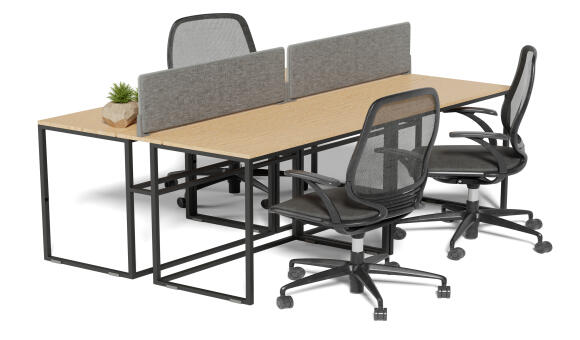How to Choose Ergonomic Office Furniture for Better Productivity
Creating an efficient and productive workspace begins with selecting the right office furniture. Ergonomically designed pieces not only enhance comfort but also improve posture, reduce fatigue, and support concentration throughout long working hours. With many professionals spending most of their day seated, the importance of thoughtfully selected furniture that aligns with the body’s natural mechanics cannot be overstated. Choosing ergonomic options isn’t just about aesthetics—it’s about building a healthier and more productive environment.
Understanding Ergonomics in the Workplace
Ergonomics focuses on adapting the workplace to meet the physical needs of its users. It ensures that everyday work tasks can be completed comfortably, efficiently, and safely. In an office setting, ergonomics plays a critical role in reducing strain injuries, promoting better spinal alignment, and supporting longevity in professional performance. Key factors in ergonomic setup include proper back support, adjustable furniture, sufficient movement, and optimal work surface placement.
Why Productivity Is Tied to Proper Workspace Design
Productivity is closely linked to comfort and health. When employees are uncomfortable, they tend to move frequently, become distracted, or suffer from aches and pains that take their focus away from tasks. Ergonomic adjustments help maintain energy levels and keep the mind alert. Investing in a good working environment ultimately translates into higher job satisfaction, fewer sick days, and consistent performance.
Finding the Right Desk
The desk serves as the foundation of your workspace and should support your daily tasks without hindering movement. Consider desks that offer:
Adjustable height settings: Sit-stand desks allow seamless transitioning between sitting and standing, which keeps blood flowing and minimizes stiffness.
Sufficient surface area: Your desk should comfortably hold a computer, paperwork, and other essentials without being cluttered.
Legroom and clearance: Adequate space underneath prevents knee strain and awkward leg positions.
Ensure the desk height lets you keep your elbows at roughly a 90-degree angle when typing to avoid strain in the shoulders or wrists.
Choosing an Ergonomic Chair
An ergonomic chair is arguably the most crucial investment for any workstation. These are the key features you should consider to ensure maximum comfort and posture support.
Adjustable seat height: Your feet should rest flat, with thighs parallel to the floor.
Lumbar support: A chair that follows the curve of your lower back helps prevent slouching.
Seat depth: There should be a few inches of space between the back of your knees and the edge of the seat.
Armrests: Preferably adjustable to keep forearms level and shoulders relaxed.
Tilt and swivel: Allow easy movement and reaching without straining your torso.
Sitting correctly helps relieve pressure from your spine and hips while allowing you to work for longer periods comfortably.
Mid-Article Focus on office chairs
Choosing the right office chairs becomes even more relevant in environments where employees work long hours. A well-designed chair with breathable material, responsive movement, and supportive cushioning ensures comfort throughout the day. Modern ergonomic chairs often come with dynamic backrests that adapt to movement, promoting regular micro-adjustments and maintaining circulation. The goal is to allow the user to sit in a neutral, upright posture without conscious effort. A supportive chair not only enhances productivity but can also prevent long-term musculoskeletal issues.
The Importance of Monitor and Accessory Placement
While furniture is vital, the placement of monitors, keyboards, and accessories complements the benefits of ergonomic furniture.
Monitor height: The top of the screen should be at or slightly below eye level to avoid neck strain.
Viewing distance: Keep monitors about an arm’s length away to reduce eye fatigue.
Keyboard and mouse: Place them close to each other on the same level to maintain a neutral wrist position.
Accessories like footrests, document holders, and ergonomic keyboard trays further improve alignment and reduce unnecessary movements.
Incorporating Movement into Your Setup
No matter how comfortable your setup is, sitting for extended periods is not ideal. Ideally, your workspace should encourage movement throughout the day. Consider integrating:
Sit-stand flexibility: Alternate between sitting and standing every 30–60 minutes.
Break routines: Short stretching breaks every hour help relax muscles and prevent stiffness.
Active sitting options: Balance stools and kneeling chairs can add variation to your posture.
Movement maintains circulation, reduces fatigue, and keeps the body engaged, supporting cognitive alertness.
Aesthetic and Functional Balance
While ergonomics focuses on comfort, the look of your workspace should not be neglected. A clean, aesthetically pleasing environment promotes a clear mind. Opt for furniture that blends functional adjustability with a professional appearance suitable for your workspace décor. Durable materials and a harmonious color scheme can enhance the environment’s appeal and encourage consistent use of ergonomic habits.
Budgeting Wisely for Ergonomic Investments
Quality ergonomic furniture can be more expensive, but it often pays for itself by reducing discomfort-related downtime and boosting productivity. When budgeting:
Prioritize essentials like chairs and desks over accessories.
Opt for adjustable features that can accommodate different users.
Consider modular options that grow with evolving office needs.
Remember that ergonomic upgrades are a long-term investment in health and performance.
Wrapping Up: Creating a Productivity-Focused Workspace
Designing a productive office begins with carefully selecting the right office table and chair setup. When ergonomics guide your choices, each piece of furniture works together to support posture, comfort, and efficiency. With proper planning and attention to detail, ergonomic workspaces can transform the way we work, fostering healthier habits and sustained productivity in any professional environment.









 UnlockWare Group
UnlockWare Group
Comments (0)